Thank you for visiting my blog. As of 2019 the database is approaching 400 posts identifying cast iron drinking fountains located around the world. To search for a specific item use the Search Box by entering a relevant detail e.g. city, memorial name, etc. The blog can also be searched using the Category Box which offers a search by country, foundry, historic registers, etc.
Continue readingThe Drinking Fountains of Mitcham
Location: Mitcham, South Australia
In 1882 there was a series of drinking fountains located along the pipeline between Mitcham and Adelaide.
Under the big oak tree near Brownhill Creek at White Bridge there is a cast-iron drinking fountain which was one of the original drinking fountains and part the Mitcham Water Works built in 1879. For 50 years water was provided from Ellison’s Gully through the valley using a piped-water network. A second fountain was adjacent to the Chapel footbridge where children attending the school used to drink.
The fountain was a tall slim pillar with a hexagonal cap. Water was accessed via a spigot between two rings.
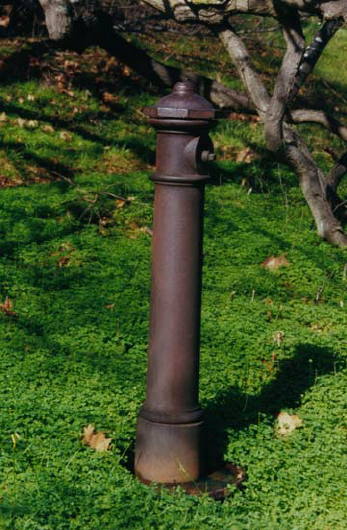
A drinking fountain commemorating Charles Wright stands on Princes Road & Torrens Street at the Mitcham Village Institute. The fountain is a tall slim pillar with a hexagonal cap terminating in a cone shaped finial. A basin was located midway. The sculpture of the upper part of a mermaid with arms stretched back sits above the basin. Directly above the mermaid is a circular armoria with commemoration: This replica drinking fountain recognises the / outstanding contribution which / Charles F. Wright, A. M., / Past President and Paul Harris Fellow / of the Rotary club of Mitcham / has made to Australia, the State of South / Australia and the City of Mitcham / with special emphasis on our heritage. Charles made the pattern used for the casting of / this replica and two originals / which are located in Sutton Gardens / and the Mitcham Reserve. An annular trough at ground level captured overflow water for use by dogs.
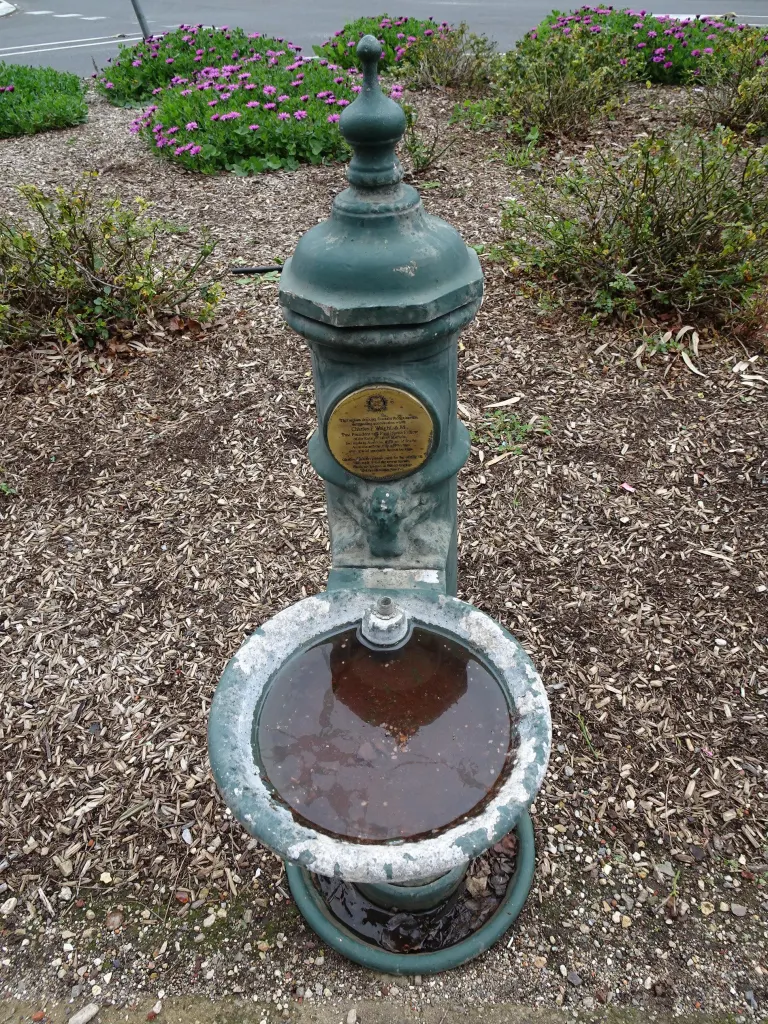
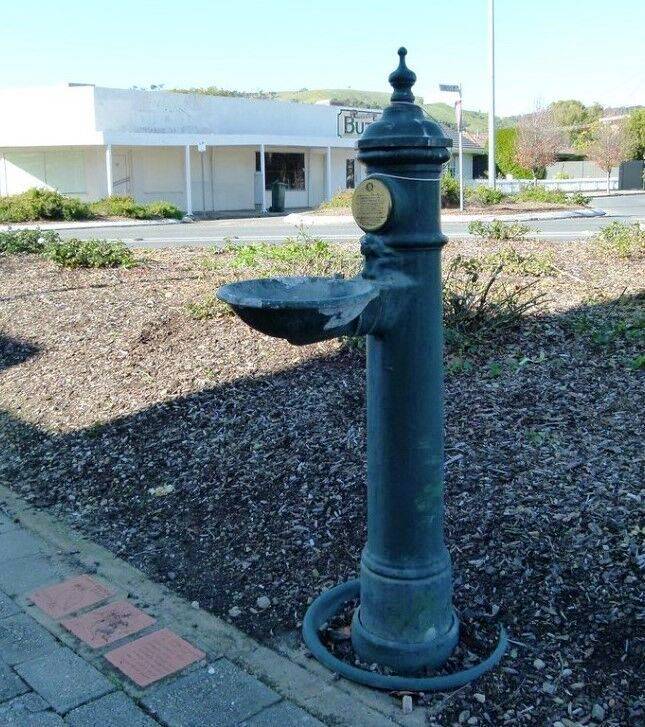
A similar fountain is located on the Albert Street side of Sutton Gardens, also with a hexagonal cap terminating in a cone shaped finial. The sculpture of the upper part of a mermaid with arms stretched back sits above a basin. Directly above the mermaid is a circular armoria identifying Rotary Club of Mitcham. An annular trough at ground level captured overflow water for use by dogs.
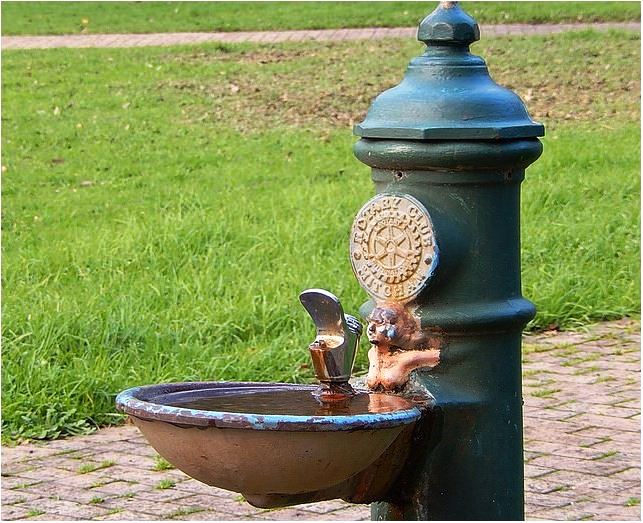
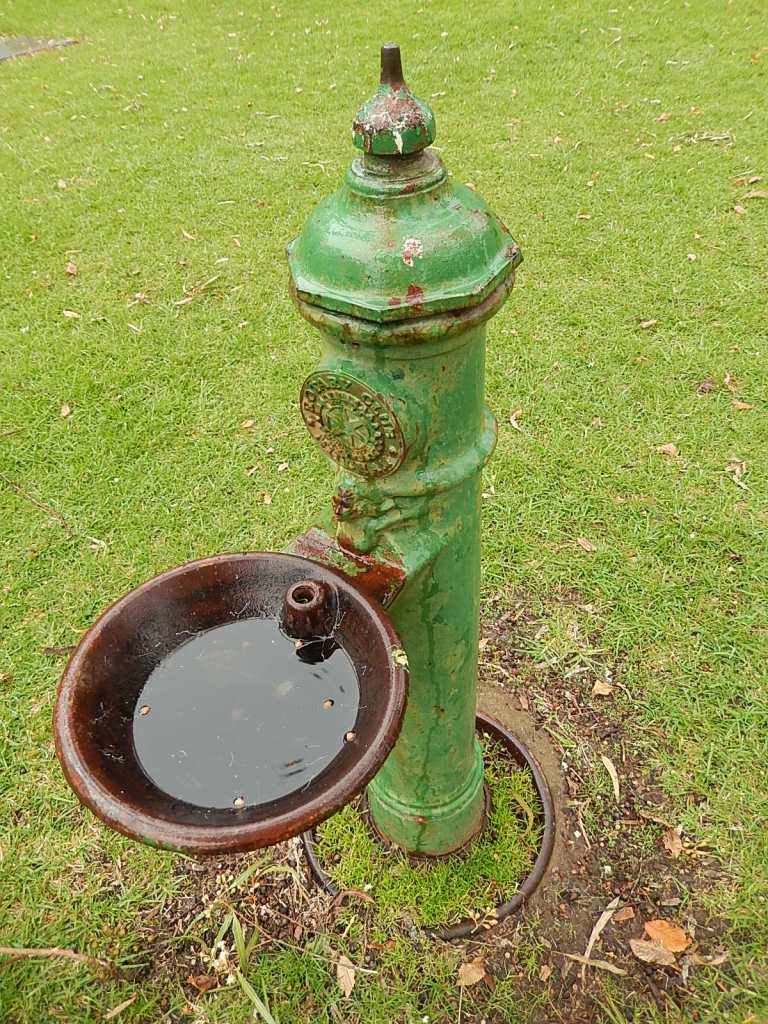
Glossary:
- Armoria, shield, coat of arms, crest
- Annular, ring-shaped
- Finial, a sculptured ornament fixed to the top of a peak, arch, gable or similar structure
Lion’s Mouth Fountain
Location: Selborne, East Hampshire, England
Inset into a masonry wall located on the B3006 at the south end of the village of Selborne, is a fountain and cattle trough. It was manufactured by the Saracen foundry from a design prepared by TP Hall, Portsmouth and donated to the Village by Mr. W. Mills in 1879.
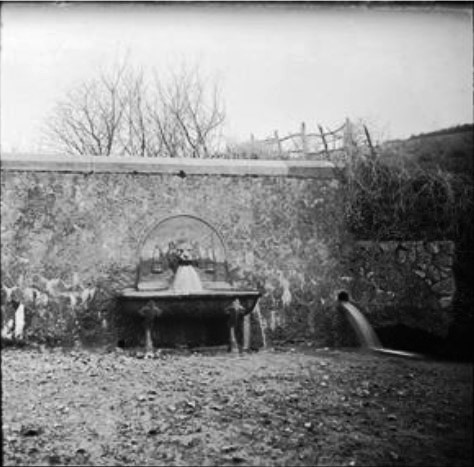
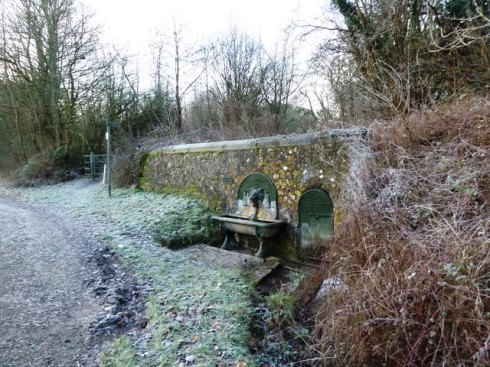
The structure consists of a trough supported by two cattle fetlocks and an arch plate with bas relief of a lion mascaron flanked by two windmills. It is surmised that the significance is related to a corn mill in Selborne and the Dorton water mill, no longer in existence. An inscription above the lion head states PRESENTED BY and the year 1879 is inscribed below the lion head.
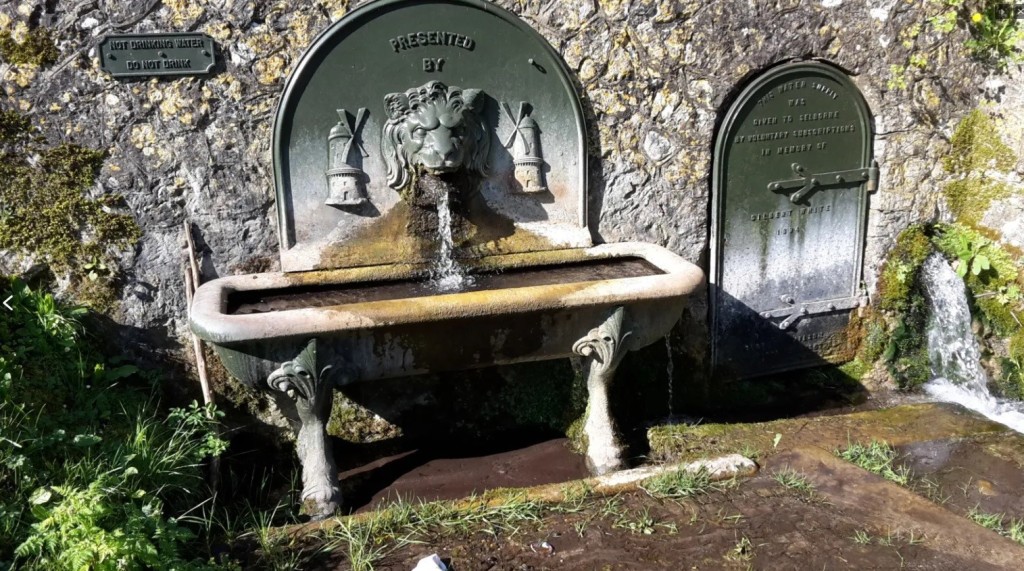
A spring rising from Noar Hill was the source of water which spouted from the mouth of the lion into a trough and also through a standing pipe. In 1894, to create a water-supply for the village, the spring was diverted by public subscription in memory of Gilbert White who was a local pioneering naturalist, ecologist, and ornithologist.
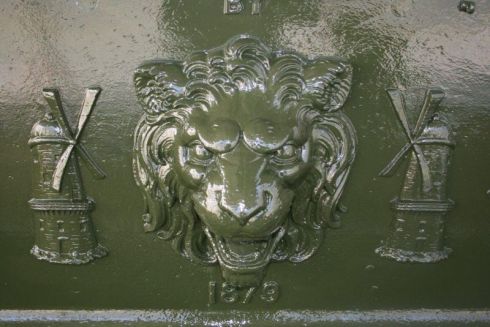
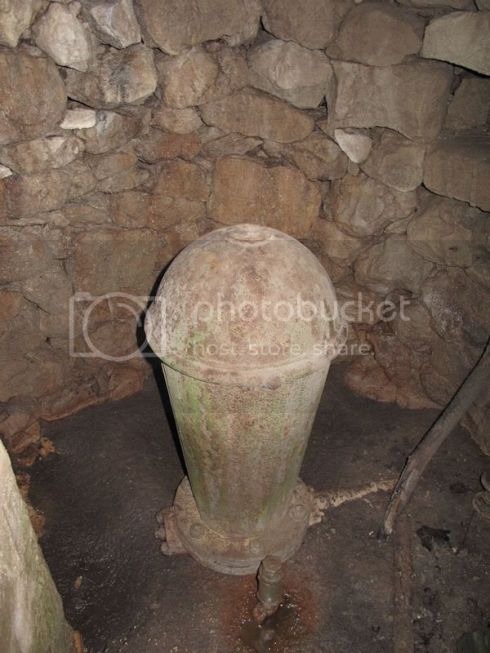
To the left is a plaque advising visitors that the water supply is NOT DRINKING WATER / DO NOT DRINK. An arched door on the right states: THIS WATER SUPPLY / WAS / GIVEN TO SELBORNE / BY VOLUNTARY SUBSCRIPTIONS / IN MEMORY OF / GILBERT WHITE / 1894. Behind the door is a hydraulic pump which pumped the water to stand pipes in the village until Selborne was supplied with piped water via the reservoir in 1934.
Restoration of the structures was completed by Ian Clark Restoration. Victorian Lions Head Drinking Fountain Restoration (ianclarkrestoration.com)
Glossary
- Bas-relief, sculpted material that has been raised from the background to create a slight projection from the surface
- Mascaron, a decorative element in the form of a sculpted face or head of a human being or an animal
Neptune Fountain
Location: London, England
The drinking fountain attached to a pillar in Kew Gardens featuring a mask of Neptune and a mermaid is believed to have been installed in 1859.
A newspaper article reported the following: DRINKING FOUNTAIN FOR KEW GARDENS. A drinking fountain or two for those splendid and extensive pleasure grounds for the people, are now, from the very great numbers flocking to them, very much required. Till such a needful want is supplied, a delicious glass of pure spring water may be had (gratis) by all visitors, of the official attendant in livery in charge of the lower room of the new Museum, opposite the Palm House in the Botanic Gardens.
Unfortunately I have been unable to discover any information related to the manufacturer of this model.
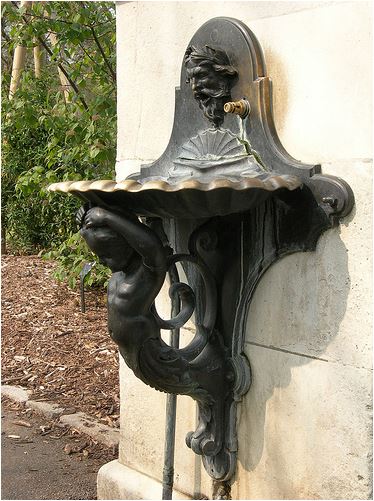
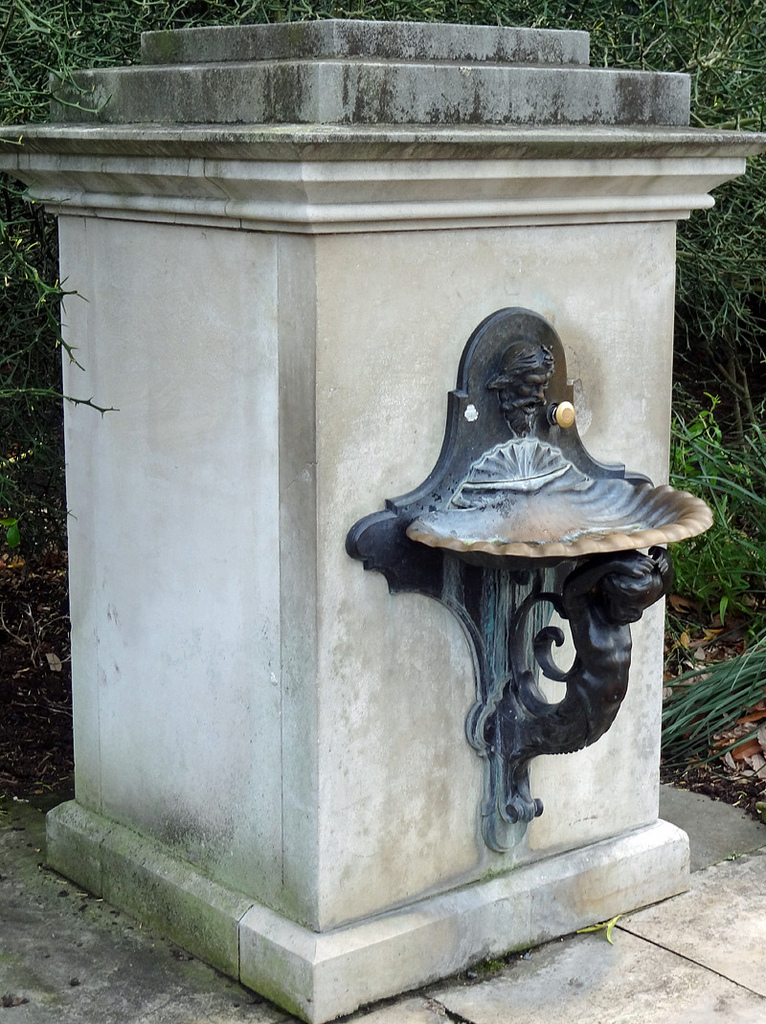
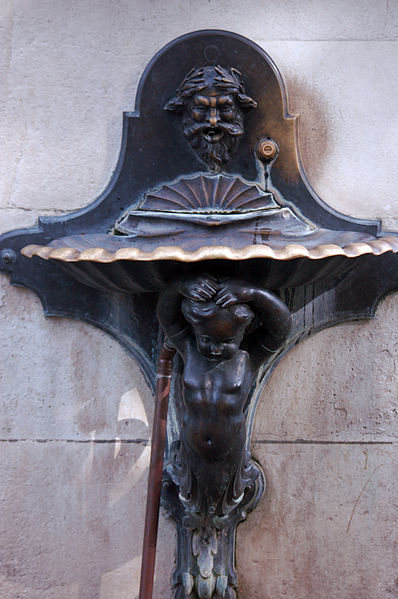
Source: https://www.flickr.com/photos/rob-young/3998178920/
Pettigo Pillar Fountain
Location: Pettigo, County Donegal, Ireland
Common to most Irish towns this model was manufactured by Glenfield and Kennedy of Kilmarnock. Found to be in disrepair in 2019, local man Gary Britton was motivated to establish a ‘Go Fund Me’ page to restore this historic drinking fountain on Mill Street originally installed in the late 19th century. The goal was quickly attained by public subscriptions.
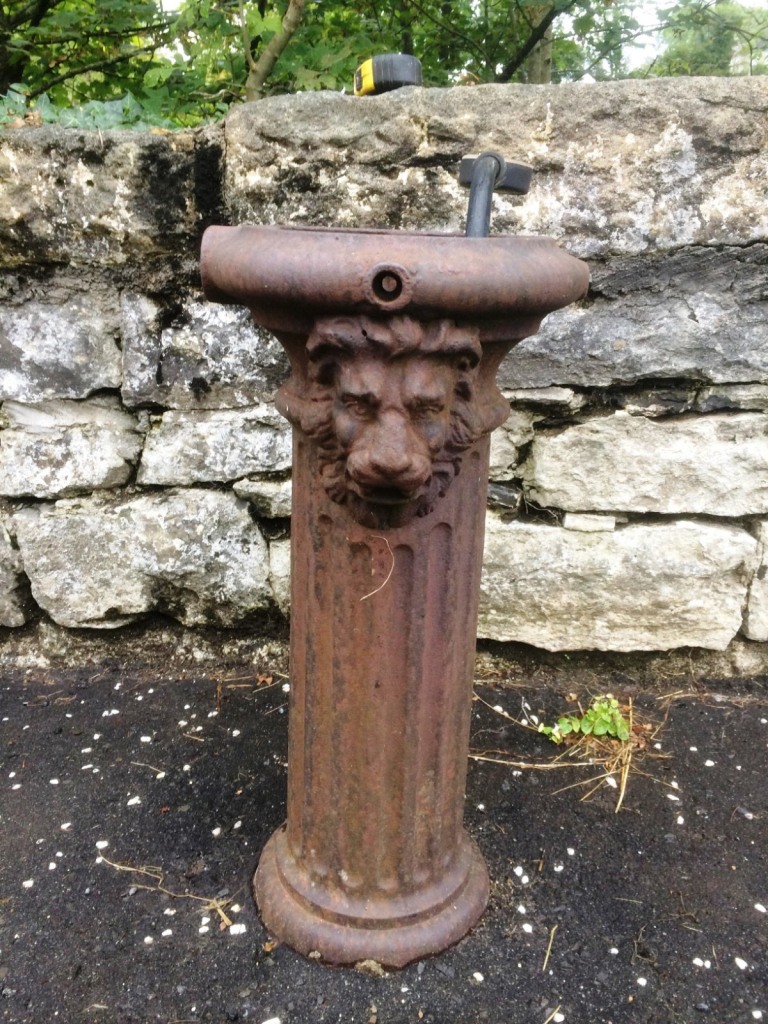
Following permission from Donegal County Council for the removal of the structure, the missing dome and finial was located by Michael Boyle, and a replacement octagonal rim knob was purchased from Ironmongery World. The fountain was coated with a rust convertor prior to spraying the finished coat.
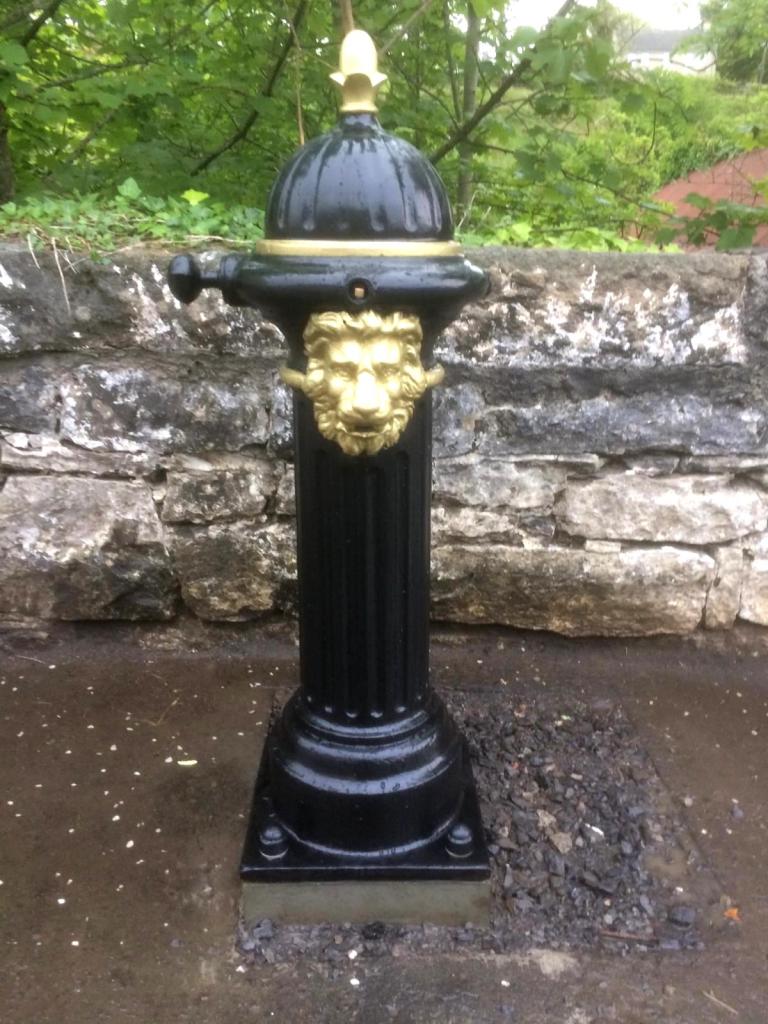
Images captured from https://imgur.com/a/bUEdh53?fbclid=IwAR2teUZDghfnXhr92PlMJfzi1wNzJF0TvBLhIn7Pp6RvhB9uzjWMf8EwMBA
This late 19th century design was advertised as Kennedy’s patent, self-closing, anti-freezing pillar fountain. It consists of a fluted cast iron cylindrical column with moulded domed cap and small finial resembling a pineapple.
Water drawn from a well by a wind pump and delivered by gravity from a reservoir, was distributed via a lion mascaron spout and captured in a tin cup suspended on a chain from the domed top.
Glossary:
- Finial, a sculptured ornament fixed to the top of a peak, arch, gable or similar structure
- Fluted, a long rounded groove
- Mascaron, a decorative element in the form of a sculpted face or head of a human being or an animal
